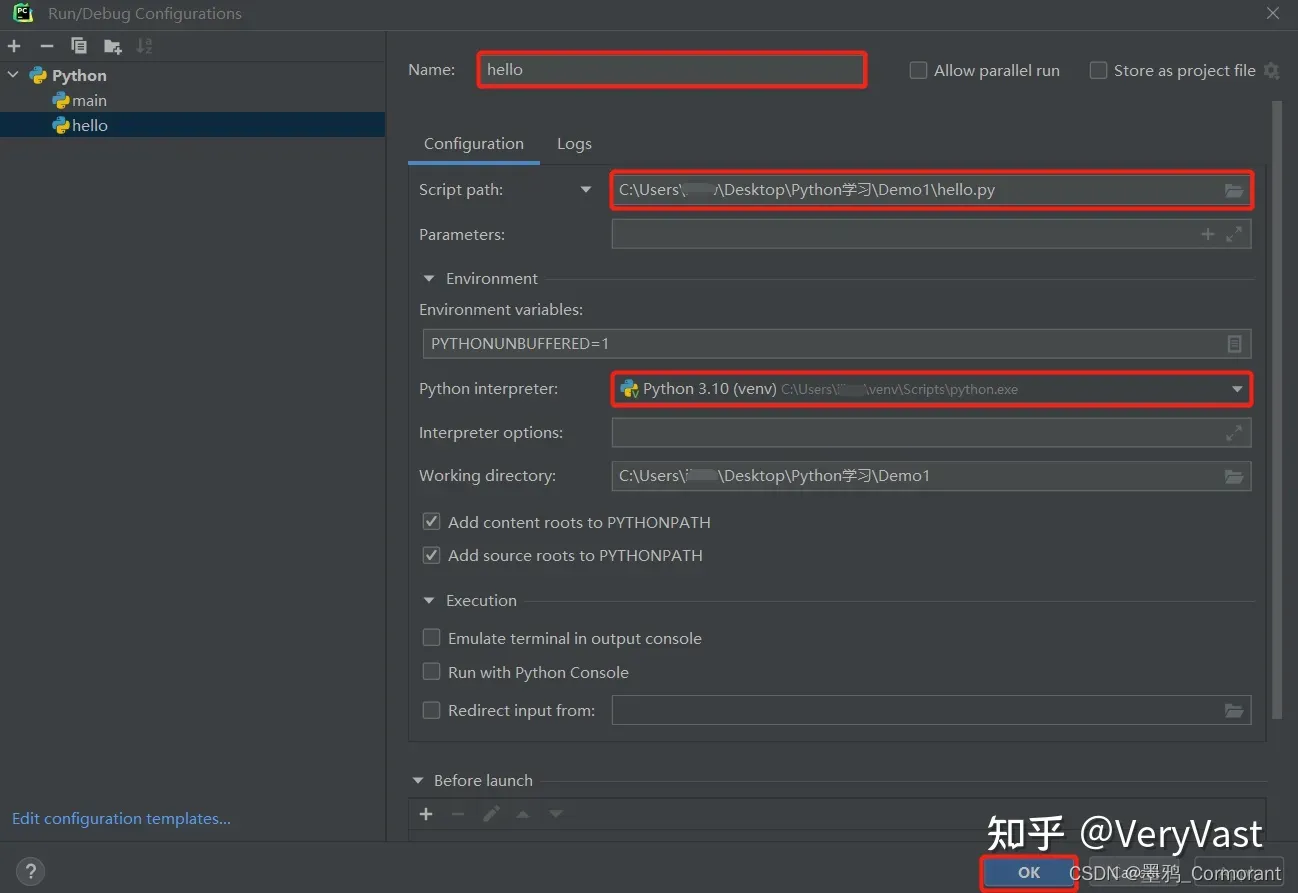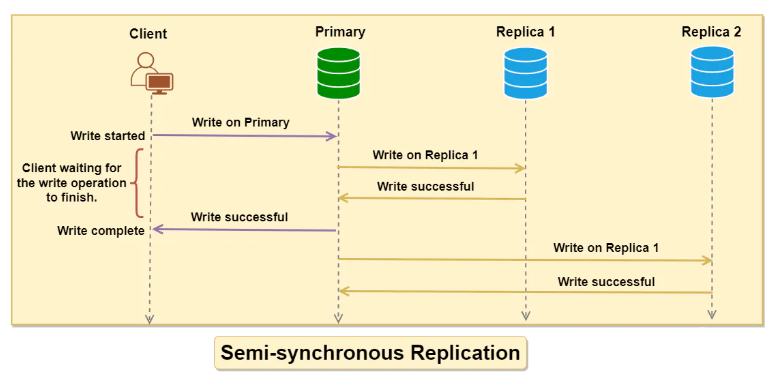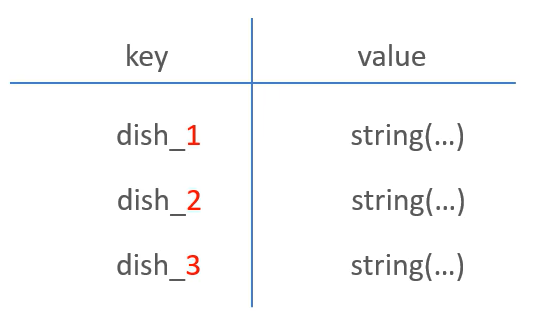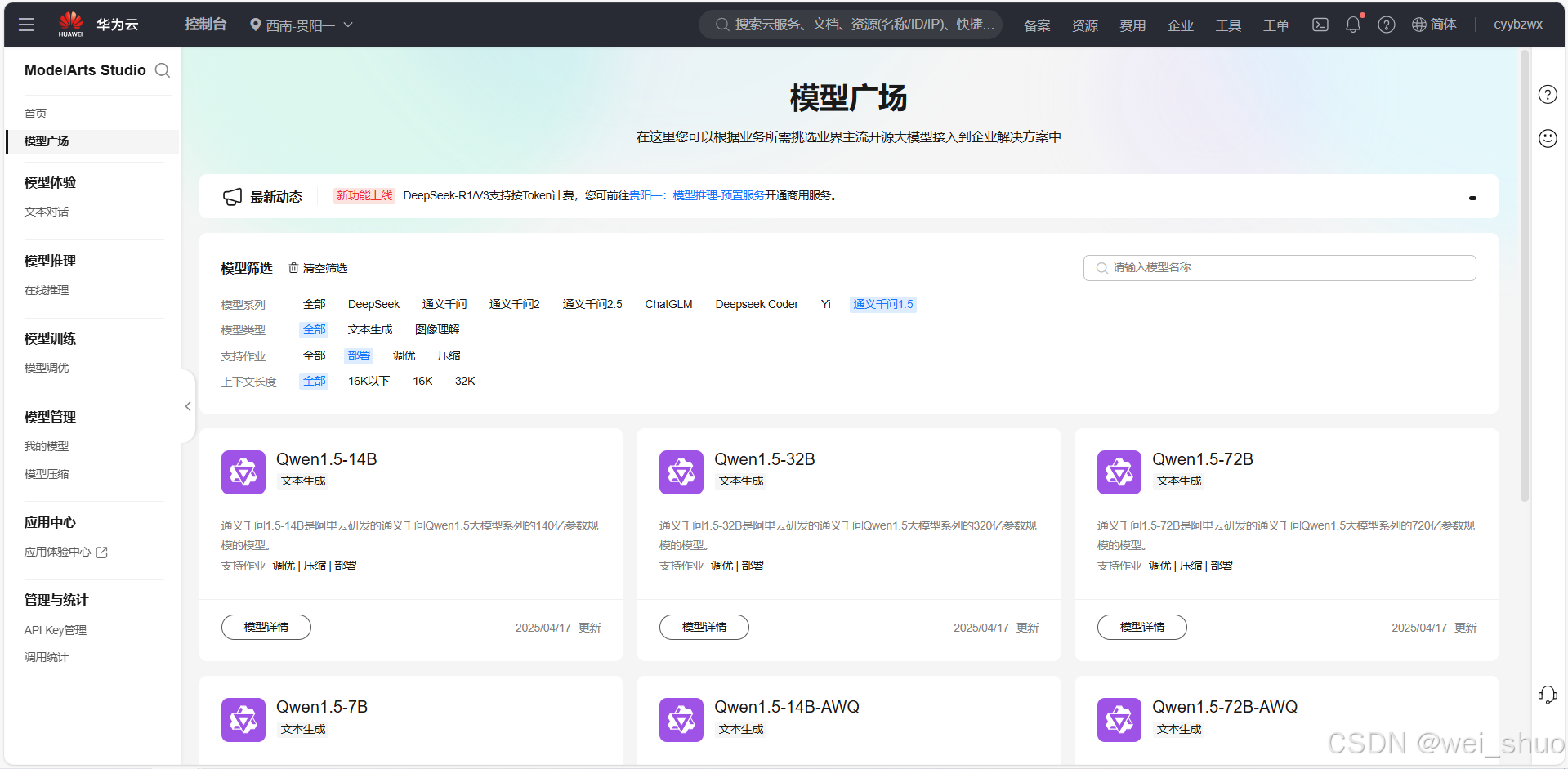Python typing函式庫和torch.types
Python typing函式庫和torch.types
- 前言
- typing
- Sequence vs Iterable
- Callable
- Union
- Optional
- Functions
- Callable
- Iterator/generator
- 位置參數 & 關鍵字參數
- Classes
- self
- 自定義類別
- ClassVar
- \_\_setattr\_\_ 與 \__getattr\_\_
- torch.types
- builtins
- 參數前的*
前言
在PyTorch的torch/_C/_VariableFunctions.pyi中有如下代碼:
@overload
def rand(size: Sequence[Union[_int, SymInt]], *, generator: Optional[Generator], names: Optional[Sequence[Union[str, ellipsis, None]]], dtype: Optional[_dtype] = None, layout: Optional[_layout] = None, device: Optional[Union[_device, str, None]] = None, pin_memory: Optional[_bool] = False, requires_grad: Optional[_bool] = False) -> Tensor: ...
@overload
def rand(*size: _int, generator: Optional[Generator], names: Optional[Sequence[Union[str, ellipsis, None]]], dtype: Optional[_dtype] = None, layout: Optional[_layout] = None, device: Optional[Union[_device, str, None]] = None, pin_memory: Optional[_bool] = False, requires_grad: Optional[_bool] = False) -> Tensor: ...
@overload
def rand(size: Sequence[Union[_int, SymInt]], *, generator: Optional[Generator], out: Optional[Tensor] = None, dtype: Optional[_dtype] = None, layout: Optional[_layout] = None, device: Optional[Union[_device, str, None]] = None, pin_memory: Optional[_bool] = False, requires_grad: Optional[_bool] = False) -> Tensor: ...
@overload
def rand(*size: _int, generator: Optional[Generator], out: Optional[Tensor] = None, dtype: Optional[_dtype] = None, layout: Optional[_layout] = None, device: Optional[Union[_device, str, None]] = None, pin_memory: Optional[_bool] = False, requires_grad: Optional[_bool] = False) -> Tensor: ...
@overload
def rand(size: Sequence[Union[_int, SymInt]], *, out: Optional[Tensor] = None, dtype: Optional[_dtype] = None, layout: Optional[_layout] = None, device: Optional[Union[_device, str, None]] = None, pin_memory: Optional[_bool] = False, requires_grad: Optional[_bool] = False) -> Tensor: ...
@overload
def rand(*size: _int, out: Optional[Tensor] = None, dtype: Optional[_dtype] = None, layout: Optional[_layout] = None, device: Optional[Union[_device, str, None]] = None, pin_memory: Optional[_bool] = False, requires_grad: Optional[_bool] = False) -> Tensor: ...
@overload
def rand(size: Sequence[Union[_int, SymInt]], *, names: Optional[Sequence[Union[str, ellipsis, None]]], dtype: Optional[_dtype] = None, layout: Optional[_layout] = None, device: Optional[Union[_device, str, None]] = None, pin_memory: Optional[_bool] = False, requires_grad: Optional[_bool] = False) -> Tensor: ...
@overload
def rand(*size: _int, names: Optional[Sequence[Union[str, ellipsis, None]]], dtype: Optional[_dtype] = None, layout: Optional[_layout] = None, device: Optional[Union[_device, str, None]] = None, pin_memory: Optional[_bool] = False, requires_grad: Optional[_bool] = False) -> Tensor: ...
當中的Sequence, Iterable, Optional, Union以及_int, _bool都是什麼意思呢?可以從torch/_C/_VariableFunctions.pyi.in中一窺端倪:
from torch import Tensor, Generator, strided, memory_format, contiguous_format, strided, inf
from typing import List, Tuple, Optional, Union, Any, ContextManager, Callable, overload, Iterator, NamedTuple, Sequence, Literal, TypeVarfrom torch.types import _int, _float, _bool, Number, _dtype, _device, _qscheme, _size, _layout, SymInt, Device
所以Sequence, Iterable, Optional, Union等是從一個叫做typing的庫中導入的。typing是Python的標準庫之一,作用是提供對類型提示的運行時支持。
_int, _bool等則是PyTorch中自行定義的類型。
typing
Sequence vs Iterable
根據Type hints cheat sheet - Standard “duck types”,Sequence代表的是支持__len__及__getitem__方法的序列類型,例如list, tuple和str。dict和set則不屬於此類型。
# Use Iterable for generic iterables (anything usable in "for"),
# and Sequence where a sequence (supporting "len" and "__getitem__") is
# required
根據Python Iterable vs Sequence:
Iterable代表的是支持__iter__或__getitem__的類型,如range和reversed。
r = range(4)
r.__getitem__(0) # 0
r.__iter__() # <range_iterator object at 0x0000015AE7945D30>
l = [1, 2, 3]
rv = reversed(l)
rv.__iter__() # <list_reverseiterator object at 0x0000015AE7980E20>
rv.__getitem__() # 不支援__getitem__方法,但因為支持__iter__所以依然可以歸類為Iterable
# Traceback (most recent call last):
# File "<stdin>", line 1, in <module>
# AttributeError: 'list_reverseiterator' object has no attribute '__getitem__'
因為Sequence也具有__iter__和__getitem__,所以根據定義,所有的Sequence都是Iterable。
l = []
l.__iter__ # <method-wrapper '__iter__' of list object at 0x7f15bb50b5c0>
l.__getitem__ # <built-in method __getitem__ of list object at 0x7f15bb50b5c0>
Callable
typing - Callable
Callable
Frameworks expecting callback functions of specific signatures might be type hinted using Callable[[Arg1Type, Arg2Type], ReturnType].
文檔寫得很淺顯易懂,不過有一點要注意的是入參型別要用[]括起來。
Type hints cheat sheet - Functions中給出了例子:
# This is how you annotate a callable (function) value
x: Callable[[int, float], float] = f
如果先不看類型提示的代碼,這句其實就是x = f,把x這個變數設定為f這個函數。當中的Callable[[int, float], float]說明了f是一個接受int, float,輸出float的函數。
Union
typing - Union
typing.Union
Union type; Union[X, Y] is equivalent to X | Y and means either X or Y.To define a union, use e.g. Union[int, str] or the shorthand int | str. Using that shorthand is recommended.
Union[X, Y]表示型別可以是X或Y,從Python 3.10以後,可以使用X | Y這種更簡潔的寫法。
Type hints cheat sheet - Useful built-in types中給出的例子:
# On Python 3.10+, use the | operator when something could be one of a few types
x: list[int | str] = [3, 5, "test", "fun"] # Python 3.10+
# On earlier versions, use Union
x: list[Union[int, str]] = [3, 5, "test", "fun"]
Optional
typing - Optional
Optional type.Optional[X] is equivalent to X | None (or Union[X, None]).
Optional[X]表示該變數可以是X型別或是None型別。
Type hints cheat sheet - Useful built-in types中給出了一個很好的例子:
# Use Optional[X] for a value that could be None
# Optional[X] is the same as X | None or Union[X, None]
x: Optional[str] = "something" if some_condition() else None
這裡x根據some_condition()的回傳值有可能是一個字串或是None,所以此處選用Optional[str]的類型提示。
Functions
mypy - Functions
指定參數和回傳值型別:
from typing import Callable, Iterator, Union, Optional# This is how you annotate a function definition
def stringify(num: int) -> str:return str(num)
多個參數:
# And here's how you specify multiple arguments
def plus(num1: int, num2: int) -> int:return num1 + num2
無回傳值的函數以None為回傳型別,並且參數的預設值應寫在參數型別後面:
# If a function does not return a value, use None as the return type
# Default value for an argument goes after the type annotation
def show(value: str, excitement: int = 10) -> None:print(value + "!" * excitement)
可以接受任意型別參數的函數則不必指定參數型別:
# Note that arguments without a type are dynamically typed (treated as Any)
# and that functions without any annotations not checked
def untyped(x):x.anything() + 1 + "string" # no errors
Callable
將Callable當作參數的函數:
# This is how you annotate a callable (function) value
x: Callable[[int, float], float] = f
def register(callback: Callable[[str], int]) -> None: ...
Iterator/generator
generator函數相當於一個Iterator:
# A generator function that yields ints is secretly just a function that
# returns an iterator of ints, so that's how we annotate it
def gen(n: int) -> Iterator[int]:i = 0while i < n:yield ii += 1
將function annotation分成多行:
# You can of course split a function annotation over multiple lines
def send_email(address: Union[str, list[str]],sender: str,cc: Optional[list[str]],bcc: Optional[list[str]],subject: str = '',body: Optional[list[str]] = None) -> bool:...
位置參數 & 關鍵字參數
# Mypy understands positional-only and keyword-only arguments
# Positional-only arguments can also be marked by using a name starting with
# two underscores
def quux(x: int, /, *, y: int) -> None:passquux(3, y=5) # Ok
quux(3, 5) # error: Too many positional arguments for "quux"
quux(x=3, y=5) # error: Unexpected keyword argument "x" for "quux"
注意到此處參數列表中有/和*兩個符號,參考What Are Python Asterisk and Slash Special Parameters For?:
| Left side | Divider | Right side |
|---|---|---|
| Positional-only arguments | / | Positional or keyword arguments |
| Positional or keyword arguments | * | Keyword-only arguments |
Python的參數分為三種:位置參數,關鍵字參數及可變參數(可以透過位置或關鍵字的方式傳遞)。
/符號的左邊必須是位置參數,*符號的右邊則必須是關鍵字參數。
所以上例中x必須以位置參數的方式傳遞,y必須以關鍵字參數的方式傳遞。
一次指定多個參數的型別:
# This says each positional arg and each keyword arg is a "str"
def call(self, *args: str, **kwargs: str) -> str:reveal_type(args) # Revealed type is "tuple[str, ...]"reveal_type(kwargs) # Revealed type is "dict[str, str]"request = make_request(*args, **kwargs)return self.do_api_query(request)
Classes
mypy - Classes
self
class BankAccount:# The "__init__" method doesn't return anything, so it gets return# type "None" just like any other method that doesn't return anythingdef __init__(self, account_name: str, initial_balance: int = 0) -> None:# mypy will infer the correct types for these instance variables# based on the types of the parameters.self.account_name = account_nameself.balance = initial_balance# For instance methods, omit type for "self"def deposit(self, amount: int) -> None:self.balance += amountdef withdraw(self, amount: int) -> None:self.balance -= amount
成員函數self參數的型別不需指定。
自定義類別
可以將變數型別指定為自定義的類別:
# User-defined classes are valid as types in annotations
account: BankAccount = BankAccount("Alice", 400)
def transfer(src: BankAccount, dst: BankAccount, amount: int) -> None:src.withdraw(amount)dst.deposit(amount)
# Functions that accept BankAccount also accept any subclass of BankAccount!
class AuditedBankAccount(BankAccount):# You can optionally declare instance variables in the class bodyaudit_log: list[str]def __init__(self, account_name: str, initial_balance: int = 0) -> None:super().__init__(account_name, initial_balance)self.audit_log: list[str] = []def deposit(self, amount: int) -> None:self.audit_log.append(f"Deposited {amount}")self.balance += amountdef withdraw(self, amount: int) -> None:self.audit_log.append(f"Withdrew {amount}")self.balance -= amountaudited = AuditedBankAccount("Bob", 300)
transfer(audited, account, 100) # type checks!
transfer函數的第一個參數型別應為BankAccount,而AuditedBankAccount是BankAccount的子類別,所以在做類型檢查時不會出錯。
ClassVar
Python中類別的變數有類別變數別實例變數兩種。如果想要將成員變數標記為類別變數,可以用ClassVar[type]。
# You can use the ClassVar annotation to declare a class variable
class Car:seats: ClassVar[int] = 4passengers: ClassVar[list[str]]
__setattr__ 與 __getattr__
# If you want dynamic attributes on your class, have it
# override "__setattr__" or "__getattr__"
class A:# This will allow assignment to any A.x, if x is the same type as "value"# (use "value: Any" to allow arbitrary types)def __setattr__(self, name: str, value: int) -> None: ...# This will allow access to any A.x, if x is compatible with the return typedef __getattr__(self, name: str) -> int: ...a.foo = 42 # Works
a.bar = 'Ex-parrot' # Fails type checking
__setattr__函數可以為類別新增實體變數。
torch.types
PyTorch中自定義的類型。
torch/types.py
import torch
from typing import Any, List, Sequence, Tuple, Unionimport builtins# Convenience aliases for common composite types that we need
# to talk about in PyTorch_TensorOrTensors = Union[torch.Tensor, Sequence[torch.Tensor]]# In some cases, these basic types are shadowed by corresponding
# top-level values. The underscore variants let us refer to these
# types. See https://github.com/python/mypy/issues/4146 for why these
# workarounds is necessary
_int = builtins.int
_float = builtins.float
_bool = builtins.bool_dtype = torch.dtype
_device = torch.device
_qscheme = torch.qscheme
_size = Union[torch.Size, List[_int], Tuple[_int, ...]]
_layout = torch.layout
_dispatchkey = Union[str, torch._C.DispatchKey]class SymInt:pass# Meta-type for "numeric" things; matches our docs
Number = Union[builtins.int, builtins.float, builtins.bool]# Meta-type for "device-like" things. Not to be confused with 'device' (a
# literal device object). This nomenclature is consistent with PythonArgParser.
# None means use the default device (typically CPU)
Device = Union[_device, str, _int, None]# Storage protocol implemented by ${Type}StorageBase classesclass Storage(object):_cdata: intdevice: torch.devicedtype: torch.dtype_torch_load_uninitialized: booldef __deepcopy__(self, memo) -> 'Storage':...def _new_shared(self, int) -> 'Storage':...def _write_file(self, f: Any, is_real_file: _bool, save_size: _bool, element_size: int) -> None:...def element_size(self) -> int:...def is_shared(self) -> bool:...def share_memory_(self) -> 'Storage':...def nbytes(self) -> int:...def cpu(self) -> 'Storage':...def data_ptr(self) -> int:...def from_file(self, filename: str, shared: bool = False, nbytes: int = 0) -> 'Storage':...def _new_with_file(self, f: Any, element_size: int) -> 'Storage':......
torch.types中的_int, _float, _bool就是Python內建的builtins.int, builtins.float, builtins.bool。
PyTorch中定義的Number則是_int, _float, _bool中的其中一個。
builtins
builtins — Built-in objects
This module provides direct access to all ‘built-in’ identifiers of Python; for example, builtins.open is the full name for the built-in function open().
可以透過builtins這個模組存取Python內建的identifier,例如Python中的open()函數可以使用builtins.open來存取。
參數前的*
參考What does the Star operator mean in Python?
Single asterisk as used in function declaration allows variable number of arguments passed from calling environment. Inside the function it behaves as a tuple.
在函數參數前加上*表示可以接受任意個參數,在函數內部,該參數會被當成一個tuple。
def function(*arg):print (type(arg))for i in arg:print (i)
function(1,2,3)
# <class 'tuple'>
# 1
# 2
# 3
相关文章:

Python typing函式庫和torch.types
Python typing函式庫和torch.types 前言typingSequence vs IterableCallableUnionOptionalFunctionsCallableIterator/generator位置參數 & 關鍵字參數 Classesself自定義類別ClassVar\_\_setattr\_\_ 與 \__getattr\_\_ torch.typesbuiltins 參數前的* …...

UE5 编程规范
官方文档 使用现代C编程标准, 使用前沿C标准库版本. 1. 类中按照先 Public 后 Private 去写 2. 继承自 UObject 的类都以 U 前缀 3. 继承自 AActor 的类都以 A 前缀 4. 继承自 SWidget 的类都以 S 前缀 5. 模板以 T 前缀 6. 接口以 I 前缀 7. 枚举以 E 前缀 8. 布尔值…...

交互消息式IMessage扩展开发记录
IMessage扩展简介 iOS10新加入的基于iMessage的应用扩展,可以丰富发送消息的内容。(分享表情、图片、文字、视频、动态消息;一起完成任务或游戏。) 简单的将发送的数据内型分为三种: 1.贴纸Stickers; 2.交…...

软件团队降本增效-建立需求评估体系
需求对于软件开发来说是非常重要的输入,它们直接决定了软件的产品形态、代码数量和质量。如果需求不清晰、不完善,或者存在逻辑冲突,将会导致软件质量迅速下降,增加代码耦合性和开发成本。 在开发过程中,对需求的产品…...

npm yarn pnpm 命令集
npm 安装依赖 npm install 安装某个依赖 npm install xxx7.6.3 安装到全局(dependencies) npm install xxx7.6.3 -S 安装到线下(devDependencies) npm install xxx7.6.3 -D 卸载某个依赖 npm uninstall xxx 卸载全局依…...

python 开发环境(PyCharm)搭建指南
Python 的下载并安装 参考:Python基础教程——搭建Python编程环境 下载 Python Python 下载地址:官网 (1)点击【Downloads】>>>点击【Windows】>>>点击【Python 3.x.x】下载最新版 Python; Pyt…...

springboot里 运用 easyexcel 导出
引入pom <dependency><groupId>com.alibaba</groupId><artifactId>easyexcel</artifactId><version>2.2.6</version> </dependency>运用 import com.alibaba.excel.EasyExcel; import org.springframework.stereotype.Contr…...

一“码”当先,PR大征集!2023 和RT-Thread一起赋能开源!
活动地址:https://club.rt-thread.org/ask/article/3c7cf7345ca47a18.html 活动介绍 「一“码”当先,PR大征集!」是一项为了鼓励开发者积极参与开源软件开发维护的活动。 你可在Github RT-Thread( https://github.com/RT-Thread …...

jmeter模拟多用户并发
一、100个真实的用户 1、一个账号模拟100虚拟用户同时登录和100账号同时登录 区别 (1)1个账号100个人用,同时登录; (2)100个人100个账号,同时登录。 相同 (1)两个都…...

澎峰科技|邀您关注2023 RISC-V中国峰会!
峰会概览 2023 RISC-V中国峰会(RISC-V Summit China 2023)将于8月23日至25日在北京香格里拉饭店举行。本届峰会将以“RISC-V生态共建”为主题,结合当下全球新形势,把握全球新时机,呈现RISC-V全球新观点、新趋势。 本…...

【系统架构】系统架构设计之数据同步策略
文章目录 一、介绍1.1、分布式系统中的数据同步定义1.2、为何数据同步如此关键1.3、数据同步策略简介 二、为什么需要数据同步2.1、提高系统可用性2.2、备份与灾难恢复2.3、提高性能2.4、考虑地理位置(如使用CDN) 三、同步备份3.1、定义和概述3.2、工作原…...

Linux内核学习笔记——ACPI命名空间
所有定义块都加载到单个命名空间中。命名空间 是由名称和路径标识的对象层次结构。 以下命名约定适用于 ACPI 中的对象名称 命名空间: 所有名称的长度均为 32 位。 名称的第一个字节必须是“A”-“Z”、“_”之一。 名称的每个剩余字节必须是“A”-“Z”、“0”之…...

使用 OpenCV Python 实现自动图像注释工具的详细步骤--附完整源码
注释是深度学习项目中最关键的部分。它是模型学习效果的决定因素。然而,这是非常乏味且耗时的。一种解决方案是使用自动图像注释工具,这大大缩短了时间。 本文是pyOpenAnnotate系列的一部分,其中包括以下内容。 1、使用 OpenCV 进行图像注释的路线图。 2、pyOpenAnnotate工…...

RunnerGo中WebSocket、Dubbo、TCP/IP三种协议接口测试详解
大家好,RunnerGo作为一款一站式测试平台不断为用户提供更好的使用体验,最近得知RunnerGo新增对,WebSocket、Dubbo、TCP/IP,三种协议API的测试支持,本篇文章跟大家分享一下使用方法。 WebSocket协议 WebSocket 是一种…...

【Java 动态数据统计图】动态数据统计思路案例(动态,排序,数组)一(112)
需求:: 有一个List<Map<String.Object>>,存储了某年某月的数据, 数据是根据用户查询条件进行显示的;所以查询的数据是动态的;需按月份统计每个年月数据出现的次数,并且按照月份排序࿱…...

kafka踩坑
问题:项目中用到kafka作为消息中间件,因为现在是开发阶段,试了一次没问题之后就没在管,今天又要测试kafka相关功能,发现消息发送者能够正常发送消息,但是消费者怎么也就收不到数据。然后经过各种百度进行了…...

让你专注于工作的电脑桌面日程提醒软件
在现代职场中,上班族们常常在繁忙的工作中会遇到各种各样的事情干扰。比如,当我们专注于完成重要的报告时,却又有同事来询问问题;在准备去会议事项时,手机却突然收到了一系列的短信和通知。这些干扰不仅浪费了我们的时…...

62页智慧产业园区数字化综合解决方案PPT
导读:原文《62页智慧产业园区数字化综合解决方案PPT》(获取来源见文尾),本文精选其中精华及架构部分,逻辑清晰、内容完整,为快速形成售前方案提供参考。 喜欢文章,您可以关注评论转发本文&#…...

苹果开发者账号注册方法简明指南
注册苹果开发者账号的方法 在2020年以前,注册苹果开发者账号后,就可以生成证书。 但2020年后,因为注册苹果开发者账号需要使用Apple Developer app注册开发者账号,所以需要缴费才能创建ios证书了。 所以新政策出来后,…...

SQL-每日一题【1321. 餐馆营业额变化增长】
题目 表: Customer 你是餐馆的老板,现在你想分析一下可能的营业额变化增长(每天至少有一位顾客)。 计算以 7 天(某日期 该日期前的 6 天)为一个时间段的顾客消费平均值。average_amount 要 保留两位小数。 结果按 …...

Cilium动手实验室: 精通之旅---20.Isovalent Enterprise for Cilium: Zero Trust Visibility
Cilium动手实验室: 精通之旅---20.Isovalent Enterprise for Cilium: Zero Trust Visibility 1. 实验室环境1.1 实验室环境1.2 小测试 2. The Endor System2.1 部署应用2.2 检查现有策略 3. Cilium 策略实体3.1 创建 allow-all 网络策略3.2 在 Hubble CLI 中验证网络策略源3.3 …...

JVM垃圾回收机制全解析
Java虚拟机(JVM)中的垃圾收集器(Garbage Collector,简称GC)是用于自动管理内存的机制。它负责识别和清除不再被程序使用的对象,从而释放内存空间,避免内存泄漏和内存溢出等问题。垃圾收集器在Ja…...

工程地质软件市场:发展现状、趋势与策略建议
一、引言 在工程建设领域,准确把握地质条件是确保项目顺利推进和安全运营的关键。工程地质软件作为处理、分析、模拟和展示工程地质数据的重要工具,正发挥着日益重要的作用。它凭借强大的数据处理能力、三维建模功能、空间分析工具和可视化展示手段&…...

苍穹外卖--缓存菜品
1.问题说明 用户端小程序展示的菜品数据都是通过查询数据库获得,如果用户端访问量比较大,数据库访问压力随之增大 2.实现思路 通过Redis来缓存菜品数据,减少数据库查询操作。 缓存逻辑分析: ①每个分类下的菜品保持一份缓存数据…...

sqlserver 根据指定字符 解析拼接字符串
DECLARE LotNo NVARCHAR(50)A,B,C DECLARE xml XML ( SELECT <x> REPLACE(LotNo, ,, </x><x>) </x> ) DECLARE ErrorCode NVARCHAR(50) -- 提取 XML 中的值 SELECT value x.value(., VARCHAR(MAX))…...

华为云Flexus+DeepSeek征文|DeepSeek-V3/R1 商用服务开通全流程与本地部署搭建
华为云FlexusDeepSeek征文|DeepSeek-V3/R1 商用服务开通全流程与本地部署搭建 前言 如今大模型其性能出色,华为云 ModelArts Studio_MaaS大模型即服务平台华为云内置了大模型,能助力我们轻松驾驭 DeepSeek-V3/R1,本文中将分享如何…...

SAP学习笔记 - 开发26 - 前端Fiori开发 OData V2 和 V4 的差异 (Deepseek整理)
上一章用到了V2 的概念,其实 Fiori当中还有 V4,咱们这一章来总结一下 V2 和 V4。 SAP学习笔记 - 开发25 - 前端Fiori开发 Remote OData Service(使用远端Odata服务),代理中间件(ui5-middleware-simpleproxy)-CSDN博客…...

高效线程安全的单例模式:Python 中的懒加载与自定义初始化参数
高效线程安全的单例模式:Python 中的懒加载与自定义初始化参数 在软件开发中,单例模式(Singleton Pattern)是一种常见的设计模式,确保一个类仅有一个实例,并提供一个全局访问点。在多线程环境下,实现单例模式时需要注意线程安全问题,以防止多个线程同时创建实例,导致…...

GitFlow 工作模式(详解)
今天再学项目的过程中遇到使用gitflow模式管理代码,因此进行学习并且发布关于gitflow的一些思考 Git与GitFlow模式 我们在写代码的时候通常会进行网上保存,无论是github还是gittee,都是一种基于git去保存代码的形式,这样保存代码…...

NPOI Excel用OLE对象的形式插入文件附件以及插入图片
static void Main(string[] args) {XlsWithObjData();Console.WriteLine("输出完成"); }static void XlsWithObjData() {// 创建工作簿和单元格,只有HSSFWorkbook,XSSFWorkbook不可以HSSFWorkbook workbook new HSSFWorkbook();HSSFSheet sheet (HSSFSheet)workboo…...
